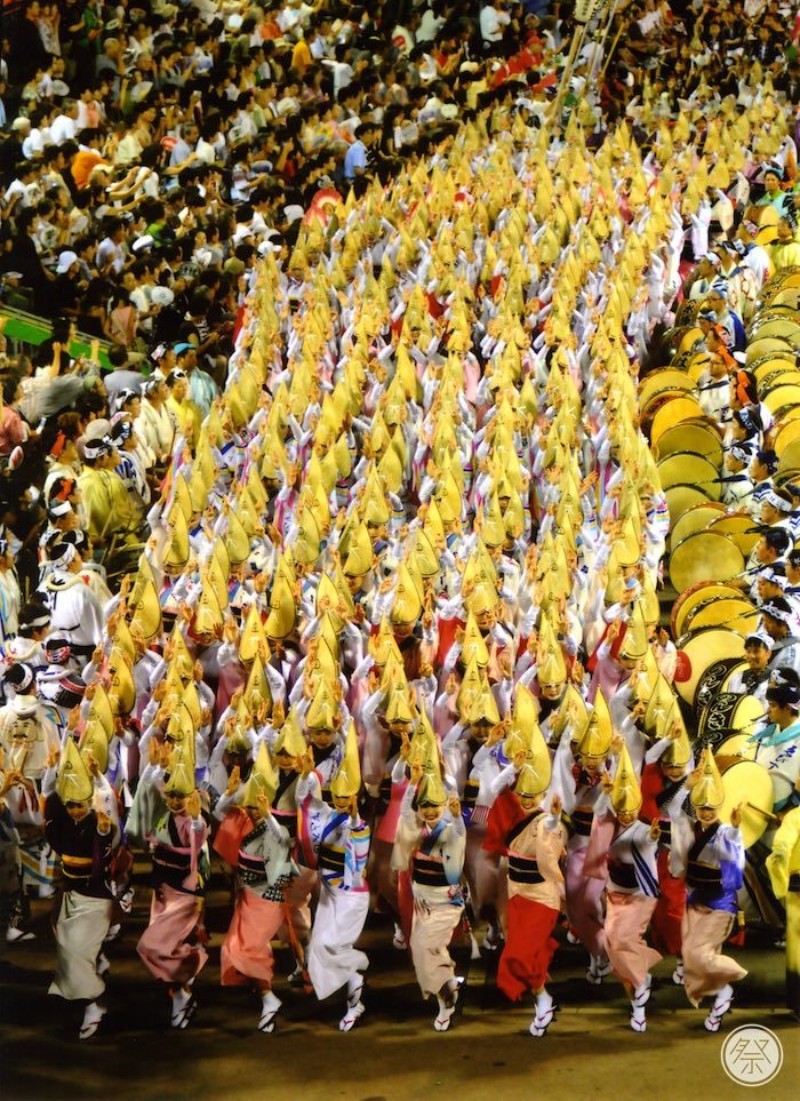

The festival takes place in Tokushima prefecture, Shikoku.įar from being the only local attraction (by the way, the food is glorious!), the Awa Odori is the prefecture’s most famous event, attracting almost 1.5 million tourists every year between the 12th and 15th of August. The lyrics are given in the ‘Song’ section of this article.Let's talk about the Awa Odori: a shockingly entertaining festival spanning four days in mid-August each summer. Others picked up commonly available musical instruments and began to play a simple, rhythmic song, to which the revelers invented lyrics. The locals, having consumed a great amount of sake, began to drunkenly weave and stumble back and forth. Performers wear traditional obon dance costumes, and chant and sing as they parade through the streets.Īwa is the old feudal administration name for Tokushima Prefecture, and odori means dance.Īwa Odori’s independent existence as a huge, citywide dance party is popularly believed to have begun in 1586 when Lord Hachisuka Iemasa, the daimyō of Awa Province hosted a drunken celebration of the opening of Tokushima Castle. Groups of choreographed dancers and musicians known as ren dance through the streets, typically accompanied by the shamisen lute, taiko drums, shinobue flute and the kane bell. Awa Odori is the largest dance festival in Japan, attracting over 1.3 million tourists every year. – The Awa Dance Festival ( 波踊り, Awa Odori) is held from 12 to 15 August as part of the Obon festival in Tokushima Prefecture on Shikoku in Japan. The dance begins as the sun goes down and continues until about 11. The shops and food stands open at around 5. The week before the festival all of the shops on the Bon Odori street open up and display traditional hanui (端縫) patchwork kimono, amigasa hats and hikosa zukin masks. It is the biggest festival of the year, drawing people from all over Tohoku, and the country at large These two dances were merged in the late 18th century to form the dance’s last incarnation which (despite attempts to stop it in the early 20th century) continues to this day. In 1601 the lord of Nishimonai, Onodera Shigemichi, burned his castle after a defeat and the people danced among the ruins to remember their lord. It began as a harvest dance in Nishimonai in about 1280. It is ranked as one of the top 3 bon dances in Japan. It is a symbolic dance to show proper respect and gratefulness to one’s deceased ancestors. The Nishimonai Bon Odori ( 西馬音内盆踊り) is held every year from August 16–18. However, JPA obtained a special permission to teach these dances from each of the regional preservation associations and we will have practice sessions various Bon Odori events! These dances are considered as special regional Bon Odori and two of them are only performed by the trained locals. Some of them are recognized as Japan’s national or regional intangible heritages.Īmong the hundreds of these regional specifi c Bon Odori dances, there are those called “ The Big Three Bon Odori.” They are: Nishimonai Bon Odori (Akita prefecture), Gujo Odori (Gifu prefecture) and Awa Odori (Tokushima prefecture). Usually these regional specific Bon Odori dances have hundreds of years of history, so only the locals can participate in the dance circle and tourists can watch them perform. The other category is regional specific music and dances. These music and dances are introduced by the National Bon Odori Preservation Association in Japan and anyone can use them to dance. One of the categories is the standards that are known virtually anywhere in Japan. This Obon period also becomes de facto national holiday, so many people go back to their hometowns and enjoy the time with their family and festivities! Bon festivals happen all around in Japan, and one of the highlights for these festivals is “ Bon Odori.” (Bon Dacne)īon Odori can be divided into two categories. It is believed that the souls of ancestors return to the family homes. JPA has launched a new project to present Bon Odori in New York City!ĭo you know what Obon is? Obon is one of the Buddhist rituals during August 13- 16 every year in Japan.

Brooklyn Botanic Garden Kimono Show 2014.

Iwami Kagura at Japan Fest in Atlanta 2018.Iwami Kagura at the United Nations International School 2019.JPA Big Three Bon Odori on Governors Island 2019.



 0 kommentar(er)
0 kommentar(er)
